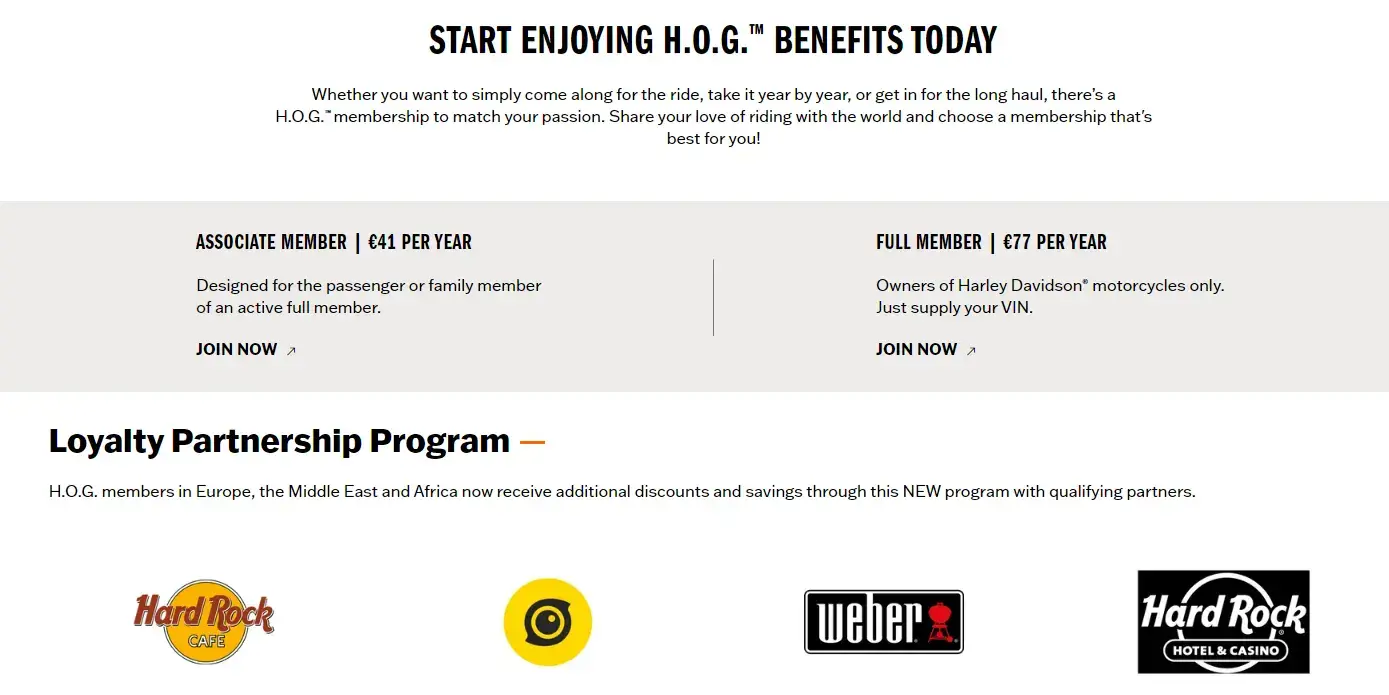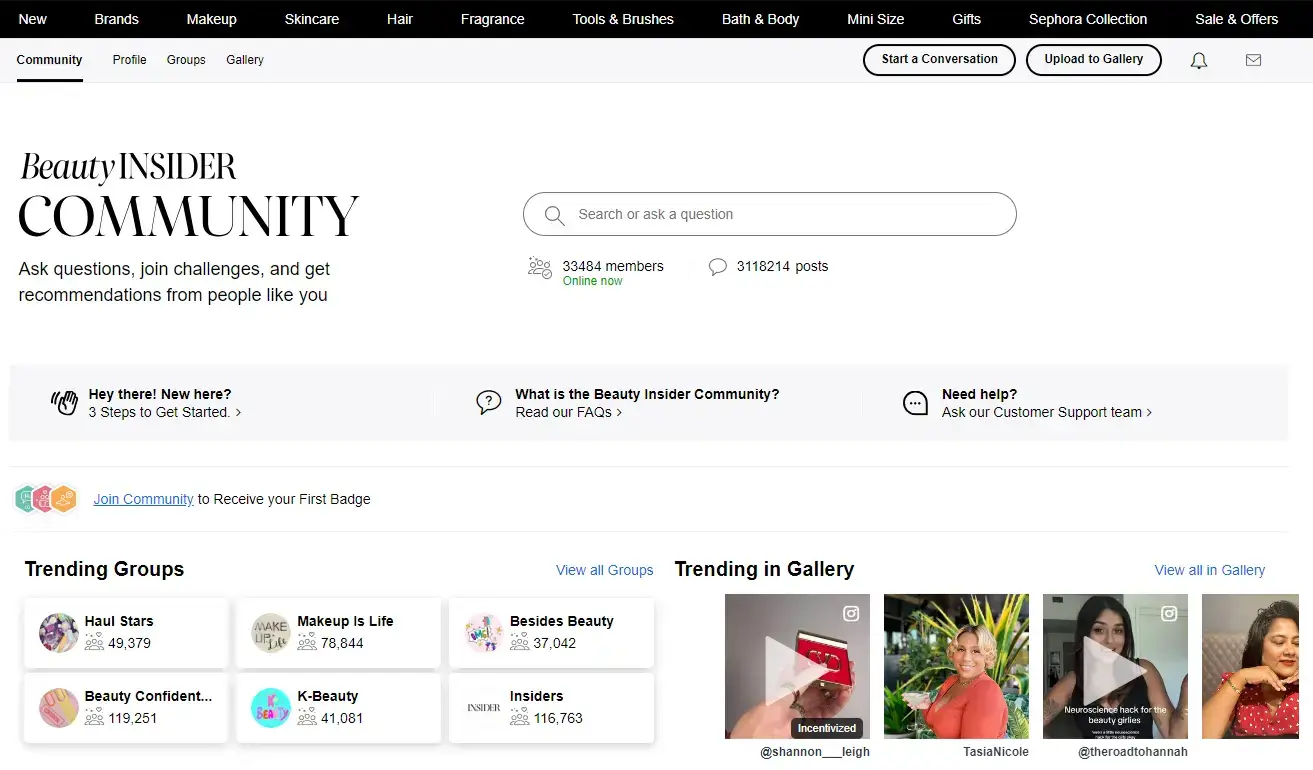Table of Contents
Online brand communities are vibrant digital spaces where people with shared interests and passions, including loyal customers, come together to connect over common brand values. These communities are built on social media platforms, online forums, or dedicated online community platforms, and it’s where members engage, share ideas, and enjoy a real sense of belonging.
As brand communities grow in popularity, their value to online businesses becomes increasingly clear. A survey by AspireIQ found that 70.4% of brands already have an active community and another 26.3% want to build one. Perhaps the most striking piece of information though is that customers expect to find these communities.
In this article, we’ll dive into the impact of online brand communities. By understanding what it is and looking at some successful examples, we’ll uncover how these communities help foster strong brand loyalty, boost customer retention, and turn customers into brand advocates.
An online brand community is a digital space where customers, fans, or a group of people who share an interest in a particular brand come together to connect, interact, and engage with one another.
These communities are typically centered around:
In an online brand community, members can share their experiences, ask questions, offer advice, provide feedback, and discuss topics related to the brand.
Building an online brand community offers numerous benefits for companies, helping them to foster deeper connections with their customers and create a loyal and engaged customer base. Here are some key advantages:
1. Enhanced Customer Loyalty
Online brand communities create a sense of belonging and connection among members, which can lead to stronger brand loyalty and greater customer satisfaction. When customers feel like they’re part of a community, they’re more likely to remain loyal to the brand and continue purchasing its products or services.
2. Increased Customer Engagement
These communities provide a platform for ongoing interaction between the brand and its customers. Members can ask questions, share experiences, and provide feedback, which keeps them engaged with the brand over time.
3. Valuable Customer Insights
By observing discussions and interactions within the community, companies can gain deep insights into customer preferences, pain points, and trends. This real-time feedback can be invaluable for product development, marketing strategies, and improving customer service.
💁 These are the 10 warning signs you need a customer education program ASAP.
4. Customer Support and Advocacy
Members of an online brand community often help each other by answering questions and providing support, which can reduce the burden on customer service teams. Additionally, loyal community members can become brand advocates, promoting the brand to others and amplifying its reach.
5. Stronger Brand Awareness and Reputation
Active and thriving communities can attract new customers interested in the conversations and activities within the group. This can lead to increased brand awareness and a positive reputation, as potential customers see the brand as trustworthy and customer-focused.
6. Cost-Effective Marketing
Brand communities often generate organic content, such as reviews, testimonials, and user-generated content, which can serve as powerful marketing tools. This content can be leveraged in marketing campaigns, reducing the need for costly advertising efforts.
💁Learn how to use educational marketing to grow your business.
7. Innovation and Co-Creation
Engaged community members may provide ideas and suggestions that can inspire new products (e.g. a new online course), services, or improvements. Some companies even involve their community in the co-creation process, leading to innovations that are directly aligned with customer needs.
8. Improved Customer Retention
When customers feel valued and connected through a community, they are more likely to stay with the brand over time. This can lead to higher customer retention rates, which is more cost-effective than acquiring new customers.
9. Quick Crisis Management
In times of crisis or negative publicity, a strong community can serve as a support system, helping to manage the brand’s reputation. Loyal community members may defend the brand or offer constructive feedback, allowing the company to respond more effectively.
💁Effective Community Management: Best Practices for Success
10. Building Long-Term Relationships
Ultimately, online brand communities help companies build long-term relationships with their customers. These relationships are built on trust, shared values, and mutual respect, leading to a more sustainable and successful business.
For the brand, these communities are valuable because they can lead to increased customer engagement, stronger brand loyalty, and even advocacy, as members often become vocal supporters who recommend the brand to others.
Every thriving online brand community is built on a foundation of a few essential characteristics. Engagement, shared values, and mutual support are the pillars that drive the success of these communities, and they’re the key elements you should focus on.
By fostering these qualities, you can create a space that attracts loyal customers and encourages them to become active participants and enthusiastic advocates.
Engagement and Interaction
In the heart of every successful online brand community lies active engagement and regular interaction among its members.
Through the community, members are given multiple avenues to connect and share their experiences. This active participation is crucial for the community’s vitality, as it fosters a lively exchange of ideas, advice, and stories.
A few examples of active participation may include:
This continuous engagement helps build a strong bond between the brand and its community members, making the brand a central part of their daily lives.
Shared Values and Identity
Members often come together because they resonate with the brand’s values, whether it’s a commitment to sustainability, a passion for innovation, or a dedication to quality. These shared values foster a deep sense of belonging, as community members see themselves not just as consumers, but as part of a larger movement or mission.
This connection extends beyond the products or services the brand offers, embedding the brand into the identity of its community members.
For example, a fitness brand community may attract individuals who prioritize health and wellness, creating a collective identity around these values that strengthen member loyalty.
User-Generated Content
User-generated content (UGC) is a powerful tool that successful brand communities implement to enhance engagement. Why? It often carries more weight with potential customers than traditional advertising, as it is seen as more genuine, and relatable.
Even though UGC may not always be high-quality, its authenticity and personal touch often make it a more persuasive and trustworthy form of content.
By encouraging members to create and share their own content—be it product reviews, how-to guides, or creative projects—brands empower their communities to contribute to the brand narrative. This enriches the content available within the community and provides valuable insights into how customers use your products.
Support and Problem-Solving
A vibrant online brand community often functions as a support network where members help each other with product-related queries and challenges.
This peer-to-peer support is invaluable, as it allows members to quickly find solutions and tips from others who have had similar experiences. Such interactions reduce the burden on official customer support channels which can be a huge relief for businesses across industries.
For instance, a tech community might offer troubleshooting advice, while a beauty community might share tips on how to best use a particular make-up product.
Brand Advocacy
If there is one thing you need to build a successful brand community that is brand advocates. These loyal customers are so enthusiastic about the brand that they actively promote it to others by word-of-mouth, social media, or other platforms.
Brand advocates are often the most engaged members of the community, acting as unofficial brand ambassadors while contributing frequently, helping others, and leading discussions.
Their genuine enthusiasm for the brand makes them highly influential, and as a study finds, potential customers as social media users tend to trust recommendations from fellow consumers than from the brand itself.
Some brands have mastered the art of building and sustaining online communities that resonate deeply with their audience better than others.
💁8 Types of Online Communities: Examples & Tips on How to Build Yours
These thriving examples show how different brands have harnessed the power of community to foster engagement, drive loyalty, and even co-create products with their customers.
Let’s examine the strategies they’ve used that contributed to their success.
Nike+ (Nike Run Club)
The Nike Run Club is a dynamic community that brings together runners from all walks of life. Through a social networking app, members can track their fitness activities, participate in challenges, and find motivation from fellow runners.
The platform is designed to encourage engagement through various features such as activity tracking, social sharing, and friendly competition. Members can post their run stats, share personal milestones, and join global challenges, creating a sense of shared achievement.

Nike Run Club has been instrumental in attracting the brand’s target audience and building a loyal customer base. Members who feel connected to the community are more likely to purchase Nike products, as the brand becomes synonymous with their fitness journey.
Harley Owners Group (HOG)
Harley-Davidson’s Harley Owners Group (HOG) is more than just a community; it’s a lifestyle. This exclusive group unites motorcycle enthusiasts who share a passion for Harley-Davidson and the freedom of the open road.

HOG offers a wide range of benefits, including organized rides, local chapter events, and exclusive member merchandise. These features create a tight-knit community where members forge strong bonds with the brand and with each other.

The deep emotional connections formed within HOG translate into enduring brand loyalty. Members are not just customers; they are lifelong ambassadors of the Harley-Davidson brand, contributing to its iconic status and sustained success.
LEGO Ideas
LEGO Ideas is an innovative platform where LEGO fans can submit ideas for new LEGO sets. The community then votes on these ideas, with popular submissions having the potential to become official LEGO products.

This platform leverages the creativity of its community turning it into a unique and rewarding challenge. Members can submit their designs, provide feedback on others’ submissions, and collaborate on projects.
LEGO Ideas has become a cornerstone of the brand’s innovation strategy, allowing fans to have a say on the product line. This deepens the connection between the brand and its most passionate customers, driving both loyalty and engagement.
Sephora Beauty Insider Community
Sephora’s Beauty Insider Community is an online hub where beauty enthusiasts come together to share tips, discuss products, and explore the latest offerings from their favorite brand.
The community is a go-to resource for anyone looking to enhance their beauty routine.

Members can participate in forums, watch video tutorials, and share their beauty looks and product reviews. Sephora also offers exclusive content and personalized incentives to keep the community engaged and active including badges and more.

Through the Beauty Insider Community, community members can create their own profile and gallery with photos and videos, and join discussions with other members in trending groups.
Starbucks Rewards
Starbucks Rewards is an online community that goes beyond just earning points for purchases. It’s a comprehensive loyalty program that offers exclusive rewards, personalized offers, and opportunities for customers to provide feedback.

The program is integrated with a mobile app that allows members to track their rewards, access special promotions, and even order ahead of pickup. The gamified elements, such as earning stars for purchases give room to fun and competition.

Starbucks Rewards has significantly boosted customer retention and advocacy. By offering tangible rewards and creating a seamless, engaging experience, Starbucks has cultivated a community of loyal customers who are motivated to return frequently.
Apple Support Community
The Apple Support Community is an online space where Apple users connect to share experiences, ask questions, and troubleshoot issues with their devices. This community provides a platform for users to engage with Apple experts as well.

It offers discussion forums, a knowledge base, and a messaging system where members can interact. The greater the interaction the bigger the award points, and privileges a community member gets. Users answer questions, write reviews, and share tutorials.

Apple’s community platform is the go-to resource for troubleshooting and learning. This space helps the brand maintain a loyal customer base and enhances the overall user experience.
Airbnb Community Center
The Airbnb Community Center is an online space where Airbnb hosts and guests connect, share stories, and provide advice. This community fosters collaboration and mutual support among members, enhancing the overall Airbnb experience.
It includes discussion forums, messaging tools, and spaces for sharing UGC such as travel tips, hosting experiences, and local insights. The platform also offers live streaming for events and workshops, helping to further grow and engage the community.

Through its community, Airbnb strengthens the bond between its hosts and guests. It ranks users using different levels matching their involvement and contribution, and serves as a valuable resource for new hosts, boosting customer retention.
HubSpot Community
HubSpot’s community is an interactive platform that connects marketing, sales, and customer service professionals. It serves as a hub for users to share strategies, tips, and best practices for utilizing HubSpot’s tools.

The platform includes discussion forums, UGC, and networking opportunities, particularly during HubSpot’s annual INBOUND conference. The community also offers extensive resources, including tutorials and case studies.
It also has an upvoting system to reward the community members with the biggest contribution. Whoever wins gets the title of ‘Community Champion of the Month’.

HubSpot’s community has played a crucial role in customer retention, with the brand positioning itself as an essential partner in its customers’ success.
Building and managing an online brand community offers valuable lessons that can guide your future community initiatives. These great brand community examples we’ve just reviewed, prove there is a way to make it happen.
By reflecting on what has worked well—and what hasn’t—you can refine your approach to community management, ensuring that your community remains vibrant and aligned with your goals.
Here’s what you can do:
The recipe for success includes understanding your community’s needs, fostering a genuine connection, and continuously evolving to enhance engagement.
By applying these principles, you can build a thriving brand community that not only meets but exceeds your goals, creating lasting value for both your brand and its members.
Online brand communities like the ones we explore here, play a critical role in building brand loyalty, customer retention, and advocacy.
The future of online brand communities lies in enhancing community experience through innovations in social media, forums, and community platforms. Brands that prioritize community building will continue to enjoy strong customer loyalty, brand advocacy, and of course, repeated sales.
To stand out in today’s competitive market, try building an online brand community and making it a key part of your marketing strategy. It’s a great way to create lasting relationships with your customers and keep them coming back.
Need a platform to build your online brand community? We’ve got you covered. Try LearnWorlds for free!
Further reading you might find interesting:
Kyriaki is a Content Creator for the LearnWorlds team writing about marketing and e-learning, helping course creators on their journey to create, market, and sell their online courses. Equipped with a degree in Career Guidance, she has a strong background in education management and career success. In her free time, she gets crafty and musical.


